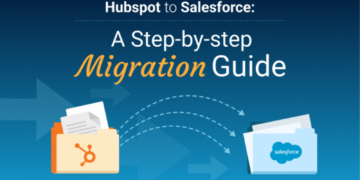
Long gone are the times when marketers were using newspapers, televisions, and radio for the advertisement to acquire interactive leads and convert viewers into customers. In the current digital era, businesses have turned towards more creative ways to reach potential prospects outside traditional methods.
According to The Rule of 27 by American Express, “It takes at least 27 impressions of a brand before a prospect even responds.”
Marketers use many effective marketing techniques. However, two of the most successful practices in the digital landscape are Native Advertising and Content Marketing.
Native advertising is a powerful tool to grow your business, while Content marketing is ideal for building trust and value among your customers. Both are renewed marketing techniques that are proven with many studies, as mentioned below.
Not being similar and yet connected, there are some critical distinctions among the two strategies that are better to be considered when designing a marketing campaign. In the article below, we will enlighten every aspect of Native Advertising VS Content Marketing to decide which one is better for you.
Let’s dive into it!
Native Advertising VS Content Marketing
Before starting the ultimate comparison, let’s define them briefly first.
Native Advertising
Native advertising is ‘a marketing method which is aimed to attract targeted audiences with the help of displayed ads that are made similar to the sites they are displayed on.’
When we discuss native ads, I refer to the recommendations broadly spread across blogs and other content displays of websites. However, paid searches, in-feed ads, and promoted listings are also described under the umbrella of native advertising that are defined below.
In Feed Ads: Ads that are appeared in the news feed of social media networks, including Facebook, LinkedIn, and Twitter.
Promoted Listings: Ads that appear at the top of Search engine results or in the result page’s sidebar.
Content Recommendation: Recommended ad blogs/articles that are appeared below the blog/article user have just read.
Native ads work best when aligned with the pre-decided sales and marketing funnel of any business. It is an ideal way to bring new leads in the funnel because they create a pool of new clients who are unaware of their products and services.
A rightly targeted strategy and brilliantly crafted content can help keep customers aligned in the entire buying journey while keeping your ROI intact.
Content Marketing
According to the definition of Content Marketing Institute, Content Marketing is ‘a strategic marketing approach focused on creating and distributing valuable, relevant, and consistent content to attract and retain a clearly-defined audience — and, ultimately, to drive profitable customer action.’
Thus, you need to create appealing, high-quality content for your customers that answer their questions and address their pain points.
After that, the next step is to put your message in front of your targeted audiences. Remember, content marketing is not just about content distribution; it goes with the crafting, publishing, maintaining relevancy, and diffusing quality of the content.
Some of the popular content marketing types are; Blogging, podcasting, vlogging, infographics, eBooks, emails, social media posts. Also, effective content marketing includes four stages:
Market Research: Helps you define your targeted audiences, product’s marketing mix, and plan sales funnel strategy.
Content Creation: Comes up with the topic and aligning it with the right keyword to optimize your content, includes a CTA to turn a regular piece of Content into a sales pitch.
Content Distribution & Promotion: If you are spending 20% time on content creation, then it is recommended to put 80% on distribution and publicity on the right channels. Great content can be of no use if the right audience cannot see it.
Content Audit: Content is not made to abandon. Revisit and update your content according to your strategy to ensure your information is up-to-date.
A successful content marketing strategy always aligns with the buyer’s persona and their purchase journey. Thus, it keeps marketers from challenging themselves to a new approach every time.
What’s The Difference Between Native Advertising And Content Marketing?
Native advertising is known to be a paid content that is disguised as an organic content that comes under content marketing strategy. However, it cannot be entirely opposed to content marketing; there are still some distinguishing characteristics to understand before designing any plan.
| Native Advertising | Content Marketing | |
| Goal | Includes the creation and delivery of ads in alignment with the content on the site they will be displayed. It refers to the distribution of content at different stages of the marketing funnel. | Includes creating, distributing, and targeting the content to the right audience with authentic updating. |
| Purpose | Native ad content may appear to provide value; however, its goal is to sell. It is designed to encourage buying. It doesn’t inherit any value of convincing users. | Content for marketing is designed to provide useful and authentic to build long-term trust. It helps generate leads by providing value to readers. Content marketing is independent of the purchase cycle but is itself valuable. |
| KPI | Their KPI is to meet campaign views, increase site traffic, and enhance buying with social engagement. | Their KPI is to build high-quality links, improve the number of leads, and enhance social media shares. |
| Benefits | It helps to drive brand awareness and brand engagement. | It helps to increase organic rankings and optimize the site for conversions. |
| Challenges | Lacks SEO benefits and costly to scale up. Also, the sponsored tag gives an impression of an intrusive ad. | It comes with slow outcomes and needs long-term investment. |
Native Advertising VS Content Marketing – Pros And Cons
Hopefully, if you land up till here, you have a clear concept of both the marketing strategies essentials. Let’s look at the advantages and disadvantages of getting a better view of how it will work for you!
| Native Advertising | Content Marketing | |
| PROS | Quick and easy to produceFeasible user targetingExcellent CTR on responsive sitesCan pass ad blockersAuthentic performance trackerShort sales cycle (from click to conversion)Gets you an extra revenueHelps user to find useful products and servicesIdeal for brand awareness | Gives you a free-hand to create every type of content as per needEasy to target audiencesNo hassle for ad blocker s as it is respected as an essential part of every site, not being an adSearch engines love content, and it’s essential for SEOServes as a catalog of knowledge for usersAn open opportunity for content upgradationAdds value to your brandHighly engaging and build brand loyalty |
| CONS | Expensive for sponsored placementsOff-putting can disturb the reading experiencePaid contents are often ignored as they are considered biasedMay affect brand perception negativelyMyths dominate that paid ads are not worth clicking due to irrelevancy | Time-consumingNeed an expert to create high-quality contentLong-term sales cycleNeeds consistent efforts and investment |
Which Marketing Tactic Is Better For You?
Time and commitment are the only barriers to get the fruits of an ideal content marketing strategy. Marketers have already realized its worth, and most experts recommend it to be incorporated as an essential part of every digital marketing strategy.
On the other hand, native advertising mostly relies on budget involving content strategy; that is why it is strategically not convenient for everyone.
Despite paying for advertorial features in a digital journal or paying for a promotional tweet or even a display ad on a search engine, I recommend you incorporate both paralleled if you have a good amount to invest.
If correctly implemented and tracked on regular basis, marketers can reliably get a powerful strategic combo at its best. When it comes to digital marketing, there are multiple variants to dictate if any one of them or their combo is right for you or not? Let’s dive into some things to consider:
- Having enough budget to experiment, and if it fails, you won’t need to look down for help.
- Having a clear persona of buyers to design strategy accordingly, like if your audiences prefer to read or are visually driven.
- Analyzing your product and services if people can buy them with minimal thinking.
- Having a click heat map data to give you insights on how your customers browse your content.
- Check if your audiences like to click on multiple links or discerning and selective on a list of available options.
How To Choose The Best Approach?
Often people believe that choosing the best approach means selecting between native advertising and content marketing and then stick to it with a singular focus. However, combining both is the actual trick to deliver better results; that a business thrives.
Also, as a successful marketer, you may need to consider some critical things below to decide how it will work for you:
Consider Your Budget Plan: Native advertising can be more expensive than content marketing. Especially when you have an in-house team for content creation just like having writers for university assignments. However, if you have less budget, it is preferable to focus more on content marketing resources and organic SEO until you are established enough to buy paid ads to generate revenue.
Join An Authentic Ad Community: Being a part of a high performing native ad network can add an upfront cost to your expenses. However, it will help get you better advertising support and high-quality traffic, primarily if you aim to cater to famous publishers.
Hire A Professional Agency: Despite being a successful business agency, you may need to hire a professional content marketer or editor or an advertising agent. The reason is, making a partnership with a proficient expert helps you to ensure the quality of your content as they are the best in their expertise.
Undoubtedly, some of the best business strategies include native advertising and content marketing because they focus on organic and paid elements under one umbrella.
Businesses don’t always find it easy to get a service to tackle all of their marketing needs. Fortunately, Performance Management Software is a blessing to those who need to accelerate their businesses with professional and experienced consultancy.
How To Combine Native Advertising And Content Marketing For Better Outcomes?
As we have already discussed in detail above, how native advertising and content marketing can be fruitful when combined. But now the question arises, how to use them effectively that can synergize the results.
From the last two decades, businesses have torn among the familiarities of the authenticity of content marketing and promotional methods’ straightforwardness. Both, however, depend upon the capability of a brand to tell a story.
It seems that there is more content on the digital cloud than the audience consumption size in the current era.
That’s why in the growing popularity and highly competitive ecosystem of content marketing, creating high-quality content is just not enough.
You need to get your content in front of your targeted viewers!
Here comes native advertising to rescue your content marketing. It serves as a natural foster to your content marketing efforts.
Thus, you can get the best of both gems, the finest content from your content marketing, and the highly efficient delivery of that content with native advertising. As a result, you will get your brand with high awareness and enhanced exposure.
Moreover, there are three preferred ways to maximize the synergistic effect and get the most of them below:
Keyword Research
Native marketers fight for their search biddings while content marketers hone their organic search. However, both of them pursue similar data to analyze using different tools.
Keyword research tends to be a useful tool to bring both strategies’ ecosystem and provide businesses with a broad ground to play.
It gives targeted keywords to content marketers for content while untapped associated terminologies to native advertisers consider effective bidding. This gets businesses in a perfect position to plan and track performances.
Social Advertising Analytics
Social media is another functional area where both marketing strategies share a valuable perspective for embracing better ROI. Most brands are opting for paid content promotion due to the combined benefits and leverage of influencers on social media.
The only thing that needs to be taken care of is evaluating where to invest and how much to invest among both strategies.
Thus, a combined understanding can get an ideal social advertising analysis tool to provide users with a comprehensive report of organic and paid posts on all social media platforms.
Redefine Marketing and Sales Funnel
Here comes the most challenging stage of combining both strategies where we talk about ROI. Both marketing types fulfill different user mindsets’ needs, and it can be a bit complicated to address competition against each other.
When we see on one side of the coin, content marketing is excellent at supporting large audiences over time by creating fantastic experiences. On the other side, native ads have an edge on catching audiences ready for immediate purchase.
Redefining your sales and marketing funnel can help understand and identify places where your resources can be deployed better.
BBC Future – Morgan Stanley (The Perfect Example)
Many successful businesses have already integrated both strategies in their digital marketing plan and are ripping the fruit of their efforts. The best example includes BBC Future for Morgan Stanley.
BBC is considered as one of the best public service broadcasters. They also have native ad channels, including BBC Travel, BBC Capital, and BBC Future, specially made for their audiences outside the UK.
Here, content marketing is placed at the bottom of their news homepage without any indication of being sponsored.
Iceland was in vogue at that time; thus, Morgan Stanley Scored a huge win with the BBC’s authority having his profile on the beautiful island nation.
Therefore, when it comes to combining content marketing and native advertising, the only thing matters is what you are delivering to your audiences. It has to be hyper-relevant to them instead of your company.
When you are in a highly competitive market, you need to get a lot of attention, and for this, marketers need to produce something that audiences crave for especially if you want your audiences to get back to you often.
Bonus: Some Useful Tools
Grammarly
Google Docs
Uber Suggests
Mail Chimps
Google Adwordsf
Final Verdict
Native advertising and content marketing are similar; however, both are part of the same strategic planning to complement each other. The two concepts can also do wonders for businesses, including generating leads, improving traffic, and enhancing ROI if invested smartly.
The real benefit of combining them lies in long term reputation building and user engagement. When we analyze which one is better for marketers, the answer comes up in utilizing both of them as per need, but in combination to maximize benefits.
Businesses need to organize their content marketing department to provide reliable content performance reports. While investing in native advertising is a smart move to choose the right channels for the distribution of perfectly crafted content.
By this collaboration, businesses can have a perfect fit to grab the attention of a freshly targeted pool of customers and put yourself on the global radar!
























































